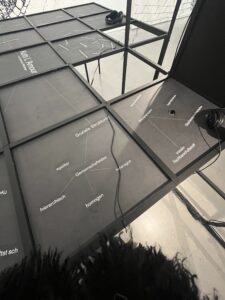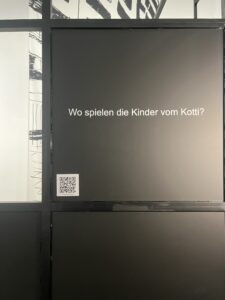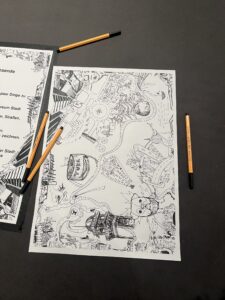Artist and Curators
The positionality curators take to engage with the curatorial practices is a crucial element in elevating the equilibrium of the project. In his article The Curatorial Turn: From Practice To Discourse, Paul O’Neill lists the criticism against the creative curatorial practices by different scholars in the 20th century (O’Neill, 2007). For example, Daniel Buren expresses disdain, accusing curators of turning artworks into mere fillers for their portfolios by saying “More and more, the subject of an exhibition tends not to be the display of artworks, but the exhibition of the exhibition as a work of art (Buren, 2004)”.
The idea of seemingly wielding authorship within the practice of my chosen artist put me in a psychological quandary. This led me to explore the concept of “wayward curating, ” as introduced by artist-curator Alberta Whittle (Whittle, 2019). It emphasizes mutual care and collective support between curators and artists throughout the curatorial process. Although initially developed within the context of supporting the black and queer community, it is still worth reinterpreting and adopting in curatorial practices. My engagement with the theory and relevant curatorial application has offered not only inner peace but also insights to further my practices.
Art and the Public
Introduced by Adam in the course, Kotti-shop is a Berlin artist-run project which currently exhibits its long-term practices in the Berlinische Galerie (Kotti-Shop/SuperFuture, 2024). In the introduction, the gallery writes, “It (Kotti-Shop) values the neighbourhood’s multiple voices, understands public space as a common asset worth protecting and promotes shared processes of creativity and negotiation (Berlinische Galerie, 2024).” The vision of the artist-led organization was manifested by the onsite sound installation (see Figure 1-2.) and the painting workshop was installed. Through the engagement of the audience, voices of the community were manifested and distributed in the white cube, which serves as a temporary intermediary, broadening its practice scope and making profound encounters with a wider audience. Drawing inspiration from this community-based art programme, the next step to consider for our group project will be locating a space to interconnect our respective practices into a common and fluid platform for dialogues and discourses.


Figure 1-2. Images I took at the exhibition Kotti-Shop/SuperFuture (2024). Audience can scan the QR code to hear the answers from the residents.

Figure 3. Images I took at the exhibition Kotti-Shop/SuperFuture (2024). Some children draw the painting with the assistance from their teachers.
(words: 352)
Reference:
Berlinische Galerie (2024) Forms of Negotiation.Available at: https://berlinischegalerie.de/en/exhibitions/current/kotti-shop-superfuture/ (Accessed: 12 March 2024).
Buren, D. (2004) ‘Where are the artists’, in Abramović, M. The next Documenta should be curated by an artist / Marina Abramović [and 30 others] ; edited by Jens Hoffmann ; translation, Vivian Rehberg. Jens Hoffmann (ed.). Frankfurt am Main: Revolver, Archiv für aktuelle Kunst.
Kotti-Shop/SuperFuture (2024) [Exhibition]. Berlinische Galerie. 16 February – 13 May, 2024.
Whittle,A (2019) “Biting the Hand That Feeds You: A Strategy of Wayward Curating”, Critical Arts, 33:6, 110-123, DOI: 1080/02560046.2019.1688848, 116-122
O’Neill, P. (2007) “The curatorial turn: From practice to discourse,” in Issues in Curating Contemporary Art and Performance.BRISTOL: Intellect Ltd. pp. 13–28.


Leave a Reply
You must be logged in to post a comment.